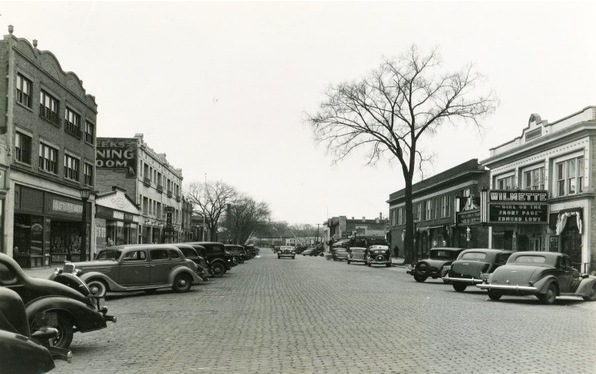Learn more about Wilmette, Illinois, is a village located in Cook County, just north of Chicago. It is a bustling community that is home to over 27,000 residents, but the area was not always so densely populated. In fact, the land that is now Wilmette was once a marshland, inhabited by the Potawatomi Native American tribe.
Before the arrival of European settlers, the area that is now Wilmette was home to Native American tribes, particularly the Potawatomi. They lived off the fertile land, hunting, fishing, and cultivating crops in this marshy region. In the 19th century, the Potawatomi were forcibly removed from their ancestral lands, making way for European settlers to claim the territory.
One of the first European settlers to arrive in the area was Antoine Ouilmette, a French-Canadian fur trader. Ouilmette and his Potawatomi wife, Archange, settled near the mouth of the Chicago River in 1828. In 1835, they received a 1,280-acre land grant from the U.S. government for their services to the Native American tribes. This land grant included a portion of present-day Wilmette, which would later be named in Antoine’s honor.

In 1850, German immigrants arrived in the area, attracted by the fertile soil and close proximity to Lake Michigan. They established farms and built homes, gradually transforming the marshland into a burgeoning agricultural community. By 1857, the first school in the area, German School, was established, reflecting the growing population of the settlement.
The railroad arrived in 1869, connecting Wilmette to Chicago and other North Shore communities. This development fueled the growth of the village, attracting new residents and businesses. The following years saw the establishment of churches, schools, and a post office, as well as the construction of elegant Victorian homes that still stand today.
In 1872, the village of Wilmette was officially incorporated. The first village president, John G. Westerfield, was elected, and the community began to organize and plan for the future. Early civic improvements included the development of a water system, streetlights, and paved streets.
The early 20th century saw a population boom in Wilmette, spurred by a wave of new residential development. With its scenic lakefront location and easy access to Chicago, Wilmette was an attractive destination for middle and upper-class families. This period also saw the construction of notable landmarks, including the Baha’i House of Worship, a stunning architectural marvel completed in 1953.
During the post-World War II era, Wilmette continued to grow and evolve. The village expanded its boundaries, annexing nearby land, and new neighborhoods were developed. A period of modernization saw the construction of schools, parks, and community facilities, catering to the needs of the growing population.
In the latter part of the 20th century, Wilmette focused on preserving its historical charm while embracing modern amenities. The village prioritized the restoration and preservation of historic buildings and neighborhoods, ensuring that the community’s rich history remained intact. At the same time, Wilmette invested in infrastructure, public transportation, and environmental initiatives, creating a balance between the past and the present.
Another notable landmark in Wilmette is the Wilmette Theater, which has been a fixture in the community since it was built in 1913. The theater has undergone several renovations over the years, but it still retains much of its original charm and character. It is a popular destination for movie-goers and live performances alike.
Today, Wilmette IL is a thriving community with a rich history and a bright future and many interesting things to do. Its residents are proud of their village’s heritage, and they work hard to preserve its natural beauty and small-town charm. Whether you’re interested in history, culture, or just a relaxing day out, Wilmette has something for everyone.
 Schedule Appointment
Schedule Appointment 
